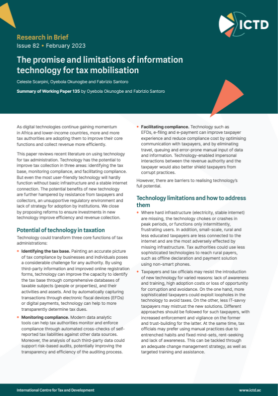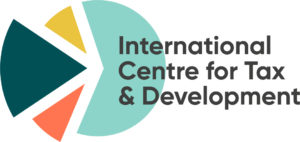Research in Brief 82
As digital technologies continue gaining momentum in Africa and lower-income countries, more and more tax authorities are adopting them to improve their core functions and collect revenue more efficiently. This paper reviews recent literature on using technology for tax administration. Technology has the potential to improve tax collection in three areas: identifying the tax base, monitoring compliance, and facilitating compliance. But even the most user-friendly technology will hardly function without basic infrastructure and a stable internet connection. The potential benefits of new technology are further hampered by resistance from taxpayers and collectors, an unsupportive regulatory environment and lack of strategy for adoption by institutions. We close by proposing reforms to ensure investments in new technology improve efficiency and revenue collection.
This Research in Brief is a summary of ICTD Working Paper 135 by Oyebola Okunogbe and Fabrizio Santoro.

